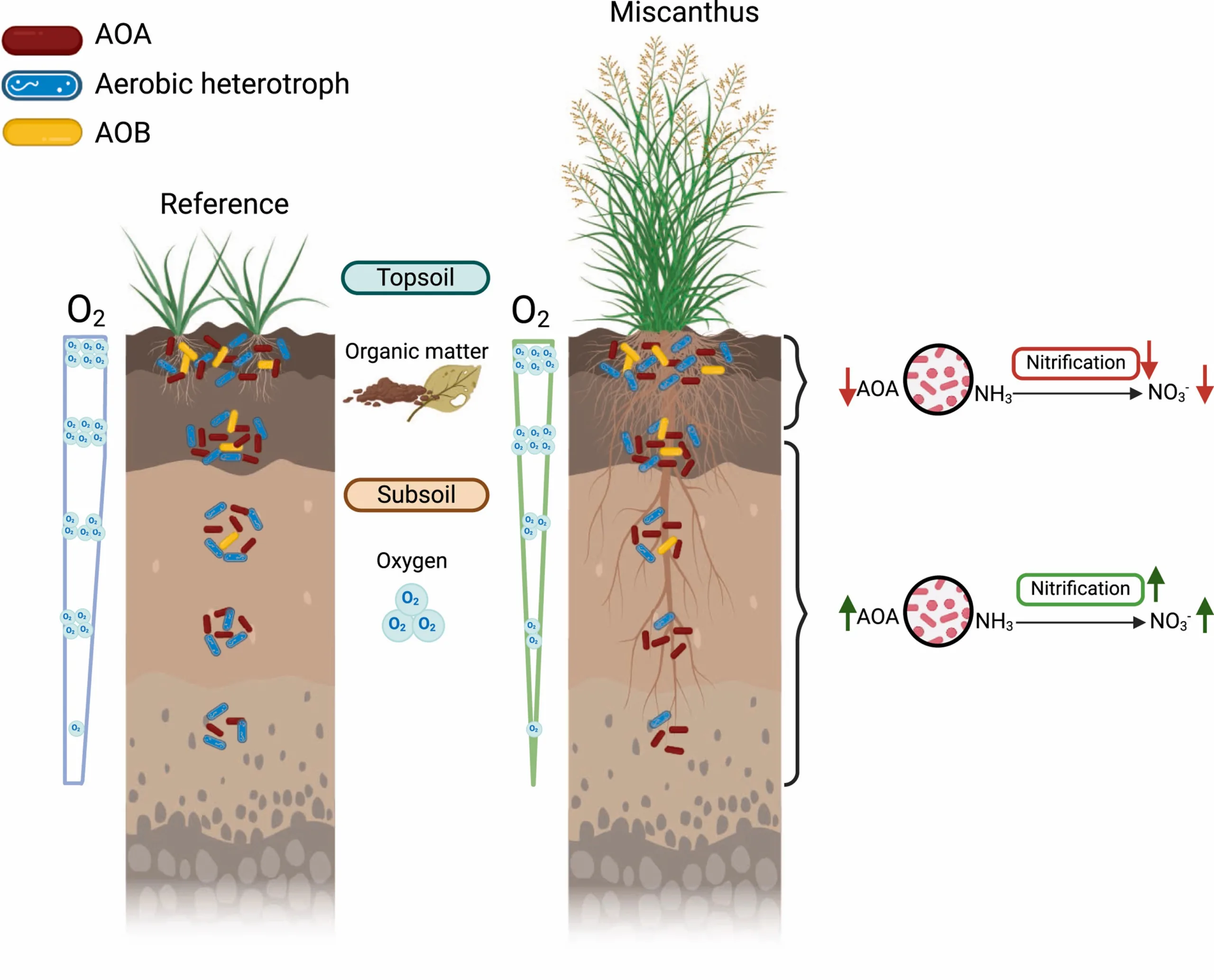Plant-Nitrifier Interactions in Topsoil and Subsoil
Themes: Sustainability
Keywords: Field Data, Plant-Soil Microbiome, Soil
Citation
Liang, D., Ji, N., Kent, A., Yang, W. Feb 26, 2024. “Plant-Nitrifier Interactions in Topsoil and Subsoil.” NIH – NCBI BioProject.
Overview

Plants can influence soil microbes through resource acquisition and interference competition, with consequences for ecosystem function such as nitrification. However, how plants alter soil conditions to influence nitrifiers and nitrification rates remains poorly understood, especially in the subsoil. Here, coupling the 15N isotopic pool dilution technique, high throughput sequencing and in situ soil O2 monitoring, we investigated how a deep-rooted perennial grass, miscanthus, versus an adjacent shallow-rooted turfgrass reference shapes nitrifier assembly and function along 1 m soil profiles. In topsoil, the suppression of ammonia (NH3) oxidizing archaea (AOA) and gross nitrification rates in miscanthus relative to the reference likely resulted from nitrifiers being outcompeted by plant roots and heterotrophic bacteria for ammonium (NH4+). The stronger tripartite competition under miscanthus may have been caused in part by the lower soil organic matter (SOM) content, which supported lower gross nitrogen (N) mineralization, the major soil process that produces NH4+. In contrast, below 10 cm soil depth, significantly greater gross nitrification rates were observed in miscanthus compared to the reference. This was likely driven by the significantly lower oxygen (O2) in miscanthus than reference subsoil, which selected against aerobic heterotrophic bacteria but in favor of AOA. Overall, we found that plants can regulate AOA community structure and function through different mechanisms in topsoil and subsoil, with suppression of nitrification in topsoil and enhancement of nitrification in subsoil.
Data
NIH – NCBI BioProject: Soil microorganisms along 1 meter soil profiles
Download (2.9 KB) includes:
- Environmental variables
- Type III variance analysis
- Pairwise comparison